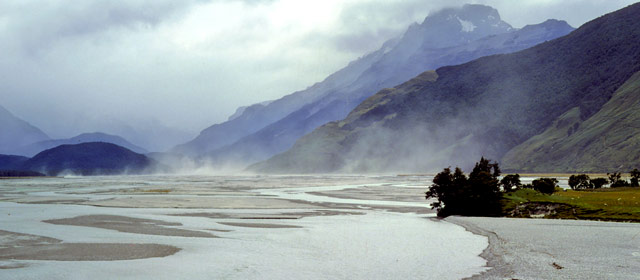Story summary
What is an ecoregion?
An ecoregion is a zone with a distinct climate, soil and plants. Each region has been shaped in different ways, by forces such as earthquakes, volcanoes, rivers, wind and rain.
Some plants such as flax grow in both the north and the south. But many species prefer certain habitats. For example, beech trees grow naturally in cool mountain areas, while kauri forests grow only in the warmer north.
Quite often, animals are also linked to ecoregions – for example, sea lions and penguins are common in the cold waters around subantarctic islands.
Nine ecoregions
New Zealand can be divided into nine ecoregions:
- the northern islands, including Norfolk Island and the Poor Knights
- the northern North Island – from North Cape down to Kāwhia
- the central volcanic plateau
- the Southern Alps and other mountain ranges
- windward districts (exposed to westerly winds)
- leeward districts (protected from westerly winds)
- Central Otago
- the Chatham Islands
- the southern islands, including the Snares and Bounty islands.
Climate in the ecoregions
It is warmer in the north than in the south. The wind comes mainly from the west, bringing rain, so the western regions are the wettest. The east side of New Zealand is drier and sunnier.
Interesting facts
- The northerly islands have some unique species, including the Norfolk Island pine tree, a gecko and a skink.
- The pumice in the soils of Waikato has come from volcanic eruptions.
- Shingle slopes in the Southern Alps are home to unique plants that have deep roots, to stop them sliding down.
- A Chatham Islands wetland bird has a long beak to probe the boggy ground there.
- On cold, cloudy Campbell Island some plants (megaherbs) have giant, 20-centimetre leaves. The leaves have more surface area to receive the scarce sunlight.





